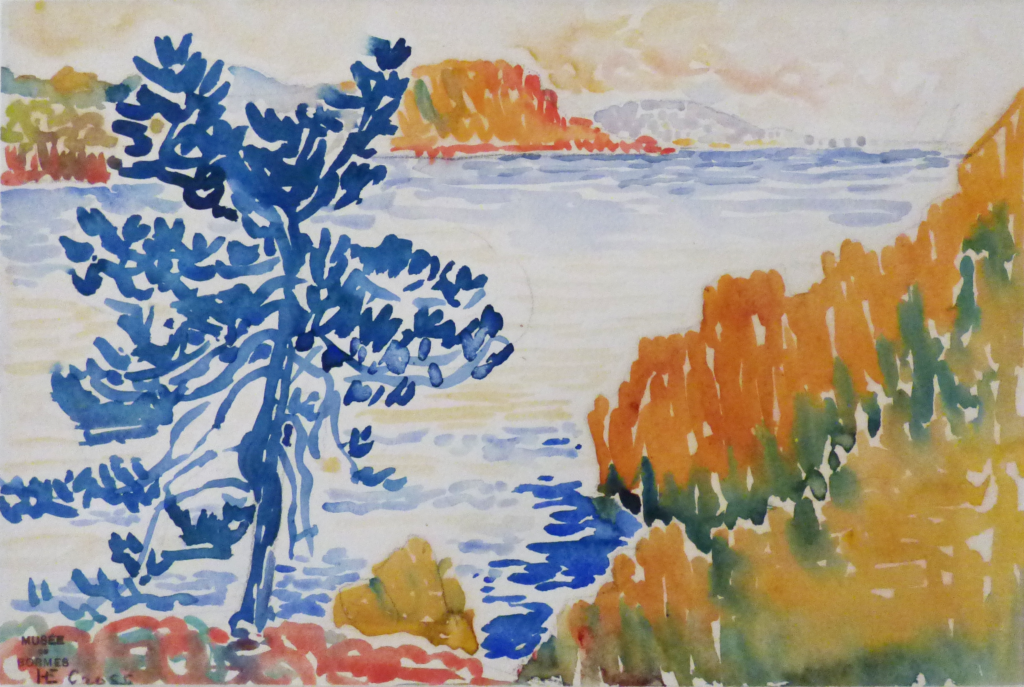Henri-Edmond Cross, whose real name was Henri-Edmond Delacroix, was born in 1856 in northern France, where his family owned a hardware store. At the age of ten, a cousin, Dr. Soins, saw in him artistic gifts and made him take drawing lessons in Lille.
At the age of 25, he exhibited for the first time at the 1881 Salon, under the name Henri Cross to avoid confusion with Eugène Delacroix. In 1886, his artist name became Henri-Edmond Cross. Cross did not immediately adhere to Divisionism. Initially a naturalist, he devoted his first works to the description of the gardens of the Observatory and Luxembourg. Initially sharing the same views in pictorial aesthetics as Seurat, Signac, Angrand or Maximilien Luce and Théo Van Rysselberghe, the great mutation of his style will take place in 1891. At the time of the death of Georges Seurat, H.E. Cross devoted himself to Divisionism. He thus broke with an aesthetic he had been practicing for ten years to enthusiastically adopt that of the group that animated the Salon des Indépendants.
Cross succeeded in expressing a romantic liberation of the landscape. From then on, his very particular style began to be known, and exhibitions followed one another: in 1896 at the Salon de l’art nouveau, and in 1899 at the Galerie Durand-Ruel.
We can feel the germ of a new chromatic harmony in his works at the beginning of the 20th century, which would later be echoed by Matisse in “Luxe, calme et volupté” and would thus prefigure the doctrine of the new abstract painting.
H.E. Cross contributed with the Neo-Impressionists to a historical upheaval that would later call into question all the theories of painting. In the twilight of a too short life, Cross visited Tuscany once again before returning to Le Lavandou where he composed his last works. In 1891, on the advice of Paul Signac who had praised the Var region, he moved to his “lost home” in Cabasson between the eucalyptus and mimosas. Cross then painted his first neo-impressionist landscapes that sublimate the colors of Bormes, Cap Nègre, Antibes … Many painters travel to visit the hermit in his domain: Theo Van Rysselberghe, Henri Matisse, Henri Manguin, Maurice Denis ..

Artist : Henri-Edmond Cross
Date of creation : 1891-1910
Material and technique : Watercolor on p
Dimensions : H. 17 cm, W. 25 cm
Inventory number : 1926.5.3

